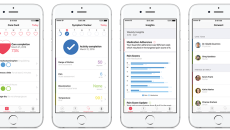Mobile
At the start of 2016, the current installed base of wearable activity tracking devices was just over 33 million in the U.S.
"We believe that mobile devices such as iPhones will become the predominant means by which patients interact with BIDMC," says Beth Israel Deaconess Medical Center CIO John Halamka, MD. "Your phone will be the repository of your medical record."
Windows 10, which Microsoft is positioning as an 'Operating System as a Service' model, offers several innovative new features that will be useful to healthcare users. Here are some things to know for a successful enterprise-wide migration.
The days of James Bond and his world-saving exploits are over. In today's reality, nation-states and their criminal partners can disrupt commerce and defenses in the free world from the safety and comfort of their computer desks.
Millions of Americans now victims of medical identity theft. Who are the criminals behind this digital era crime wave? A foray into the online black market for stolen data is a surreal experience.
(SPONSORED) Once upon a time, doctors made house calls. With fewer patients and time constraints, they could learn about people's lives, families and medical histories.
In just a few short weeks, 40,000 healthcare IT professionals will descend on the show floor in Orlando. With the final countdown on, here are a few simple reminders and things to consider as you head out the door.
You want irony? Try this: the Kaiser Family Foundation reports that we women are the ones who make the health care choices for the kids in 8 out of 10 families. Yet women are far and away the minority gender in the world of health IT leaders. While this is by no means the definitive list, I’ve done some research on the women who ARE making their mark in HIT.







